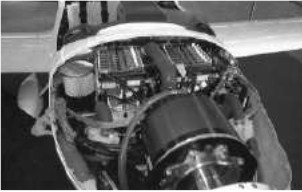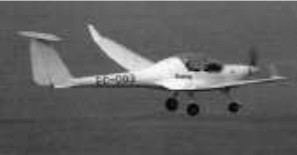Updated: 30-Jan-2020
BOEING RESEARCH & TECHNOLOGY EUROPE
(USA / Spain)
BOEING RESEARCH & TECHNOLOGY EUROPE is a design and experimentation center dedicated to electric propulsion development for aircraft. This design is not based on conventional batteries but on fuel cells.
-In this case they use PEM (Proton Exchange Membrane) fuel cells.
-Schematically it can be represented as in the Itavia magazine, which is shown below.

"Fuel cell principle diagram"
-Fuel cells can deliver continuous energy unlike normal batteries that need recharging or replacing. They are called "fuel cells" because they are provided with fuel, in this case hydrogen to the negative anode (-) and the cathode (+) is supplied with oxidant (air).
-Through reaction, electric current is conveniently directed to the receiver.
-Consumption should be at the time that reaction occurs.
-A hydrogen tank is installed in the aircraft itself and this hydrogen flows to the cell in a gaseous state. From the mentioned above, results the chemical relationship below:
H2 + 2O2 = H2O + electricidad
-The electrolyte is a solid polymer membrane that is coated with platinum particles on both sides and is functioning as a catalyst. On the hydrogen side it releases electrons that become hydrogen ions (protons) traveling through the anode to the receiver and return to the cell through the oxygen fed cathode.

"Motor assembly"
-The end result is that the hydrogen protons diffuse through the membrane towards the cathode to recombine again with oxygen and form water.
-The specific power is high and remains constant during operation, unlike conventional batteries that gradually lose capacity.

"Flight test in Ocaña, Toledo, Spain"
-In the picture of the power plant on the Dimona aircraft we have seen the electric motor that drives a German MT propeller.
-Behind the engine there are two groups of PEM fuel cells.


